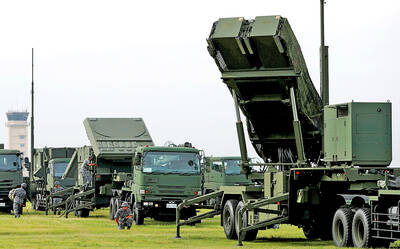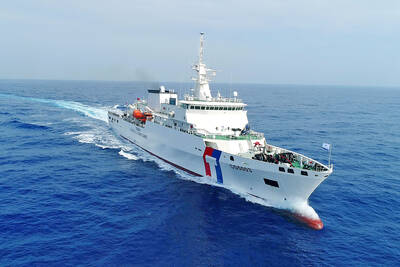Challenger Financial Services Group Ltd, the Australian fund manager backed by billionaire James Packer, replaced its chief executive officer after posting the first loss in five years as the value of investments declined.
Chief executive officer Mike Tilley, who joined Sydney-based Challenger in 2004, will be replaced by deputy Dominic Stevens, the company said in a statement.
Tilley’s departure follows those of Babcock & Brown Ltd CEO Phil Green and National Australia Bank Ltd’s John Stewart as the global credit crisis hurt their businesses.
Challenger, among the worst performing Australian financial stocks this year, joins fund managers Perpetual Ltd and Platinum Asset Management Ltd in reporting declining earnings.
“The number of departures suggests that it’s gone beyond a company specific issue and is now a symptom of the broader global crisis that’s impacting companies’ bottom lines across the board,” said Shane Oliver, Sydney-based head of investment strategy at AMP Capital Investors, which manages about US$108 billion.
“The last time we had so many departures was around 2001 following the technology boom,” Oliver said.
Profit excluding investment writedowns rose 20 percent to A$218 million (US$188 million) in the 12 months ended June 30, Challenger said in a statement yesterday. That beat the A$212 million median estimate of 11 analysts surveyed by Bloomberg.
Challenger shares rose 7.6 percent to A$2.43 as of 11:17am in Sydney yesterday, paring their loss this year to 52 percent.
The company’s net loss of A$44.2 million for the year compared with net income of A$255 million a year earlier as declining financial markets cut investments.
The Australian benchmark S&P/ASX 200 Index is down 21 percent this year, heading for an annual slide following a five-year rally.
Challenger’s earnings from managed funds dropped 23 percent in the period, while funds under management slid 19 percent to A$14.9 billion.
“We believe that the current difficult market conditions will continue to affect the sector for some time to come,” Stevens, who joined the company in 2003, said in a statement.
“We remain confident in our pursuit of generating double-digit earnings-per-share growth in the long term,” he said.
Outgoing chief executive Tilley said a year ago he expected the company to continue to deliver earnings growth of more than 10 percent “in the long term.”
Challenger, 20 percent-owned by Packer’s Consolidated Press Holdings, sold its financial planning business in June to AXA Asia Pacific Holdings Ltd for A$150 million in cash. AXA is a unit of Europe’s second-biggest insurer.
“It’s clearly been difficult for people in the funds management space because the markets have been so tough,” said Rob Patterson, managing director of Adelaide-based Argo Investments Ltd, which looks after approximately US$3.8 billion in assets. “There may be some sort of generational change happening here.”

MILITARY BOOST: The procurement was planned after Washington recommended that Taiwan increase its stock of air defense missiles, a defense official said yesterday Taiwan is planning to order an additional four PAC-3 MSE systems and up to 500 missiles in response to an increasing number of missile sites on China’s east coast, a defense official said yesterday. The official, who spoke on condition of anonymity, said that the proposed order would be placed using the defense procurement special budget, adding that about NT$1 trillion (US$32,88 billion) has been allocated for the budget. The proposed acquisition would include launchers, missiles, and a lower tier air and missile defense radar system, they said The procurement was planned after the US military recommended that Taiwan increase

POLITICAL AGENDA: Beijing’s cross-strait Mid-Autumn Festival events are part of a ‘cultural united front’ aimed at promoting unification with Taiwan, academics said Local authorities in China have been inviting Taiwanese to participate in cross-strait Mid-Autumn Festival celebrations centered around ideals of “family and nation,” a move Taiwanese academics said politicizes the holiday to promote the idea of “one family” across the Taiwan Strait. Sources said that China’s Fujian Provincial Government is organizing about 20 cross-strait-themed events in cities including Quanzhou, Nanping, Sanming and Zhangzhou. In Zhangzhou, a festival scheduled for Wednesday is to showcase Minnan-language songs and budaixi (布袋戲) glove puppetry to highlight cultural similarities between Taiwan and the region. Elsewhere, Jiangsu Province is hosting more than 10 similar celebrations in Taizhou, Changzhou, Suzhou,

TWO HEAVYWEIGHTS: Trump and Xi respect each other, are in a unique position to do something great, and they want to do that together, the US envoy to China said The administration of US President Donald Trump has told Chinese President Xi Jinping (習近平) “we don’t want any coercion, but we want [the Taiwan dispute] resolved peacefully,” US ambassador to China David Perdue said in a TV interview on Thursday. Trump “has said very clearly, we are not changing the ‘one China’ policy, we are going to adhere to the Taiwan Relations Act, the three communiques and the ‘six assurances’ that were done under [former US president Ronald] Reagan,” Perdue told Joe Kernen, cohost of CNBC’s Squawk Box. The act, the Three Joint Communiques and the “six assurances” are guidelines for Washington

DEEPENING TIES: The two are boosting cooperation in response to China’s coercive actions and have signed MOUs on search-and-rescue and anti-smuggling efforts Taiwan and Japan are moving to normalize joint coast guard training and considering the inclusion of other allies, the Japanese Yomiuri Shimbun reported yesterday. Both nations’ coast guards in June sent vessels to the seas south of the Sakishima Islands to conduct joint training, the report said, adding that it was the second joint maritime training exercise since the nations severed formal diplomatic ties in September 1972. Japan dispatched the Nagoya Coast Guard’s Mizuho, a 134m, 6,000-tonne patrol vessel which can carry a helicopter, while the Coast Guard Administration (CGA) sent the 126m, 4,000-tonne Yunlin, one of its largest vessels, the report